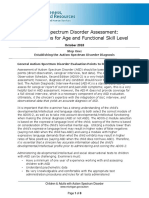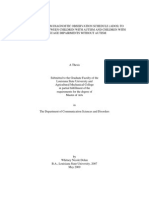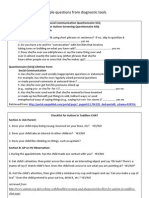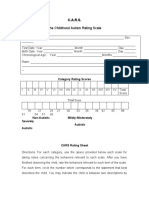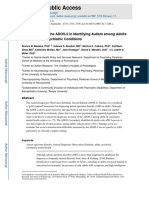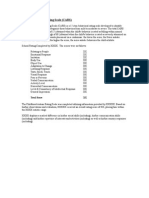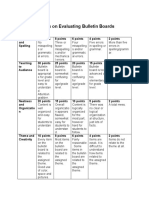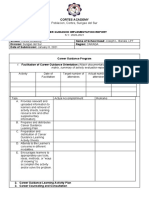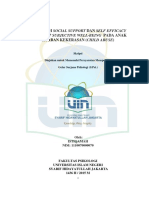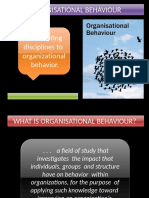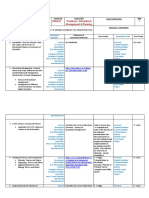93% found this document useful (14 votes)
38K views10 pagesSample Report ADI-R & ADOS-2
Dddd is a 5-year-old male who was referred for a developmental evaluation due to concerns about delays in language, communication, play, and social skills. A multidisciplinary assessment found that Dddd has some impaired communication skills, including difficulties with reciprocal conversation and social interaction. However, testing also showed he has the capacity to share enjoyment with others and can direct attention appropriately. Results were consistent with a diagnosis of autism spectrum disorder. Recommendations included speech therapy and an individualized educational program to address his language and social deficits.
Uploaded by
Romina Gisell TrogoCopyright
© © All Rights Reserved
We take content rights seriously. If you suspect this is your content, claim it here.
Available Formats
Download as DOC, PDF, TXT or read online on Scribd
93% found this document useful (14 votes)
38K views10 pagesSample Report ADI-R & ADOS-2
Dddd is a 5-year-old male who was referred for a developmental evaluation due to concerns about delays in language, communication, play, and social skills. A multidisciplinary assessment found that Dddd has some impaired communication skills, including difficulties with reciprocal conversation and social interaction. However, testing also showed he has the capacity to share enjoyment with others and can direct attention appropriately. Results were consistent with a diagnosis of autism spectrum disorder. Recommendations included speech therapy and an individualized educational program to address his language and social deficits.
Uploaded by
Romina Gisell TrogoCopyright
© © All Rights Reserved
We take content rights seriously. If you suspect this is your content, claim it here.
Available Formats
Download as DOC, PDF, TXT or read online on Scribd
/ 10


